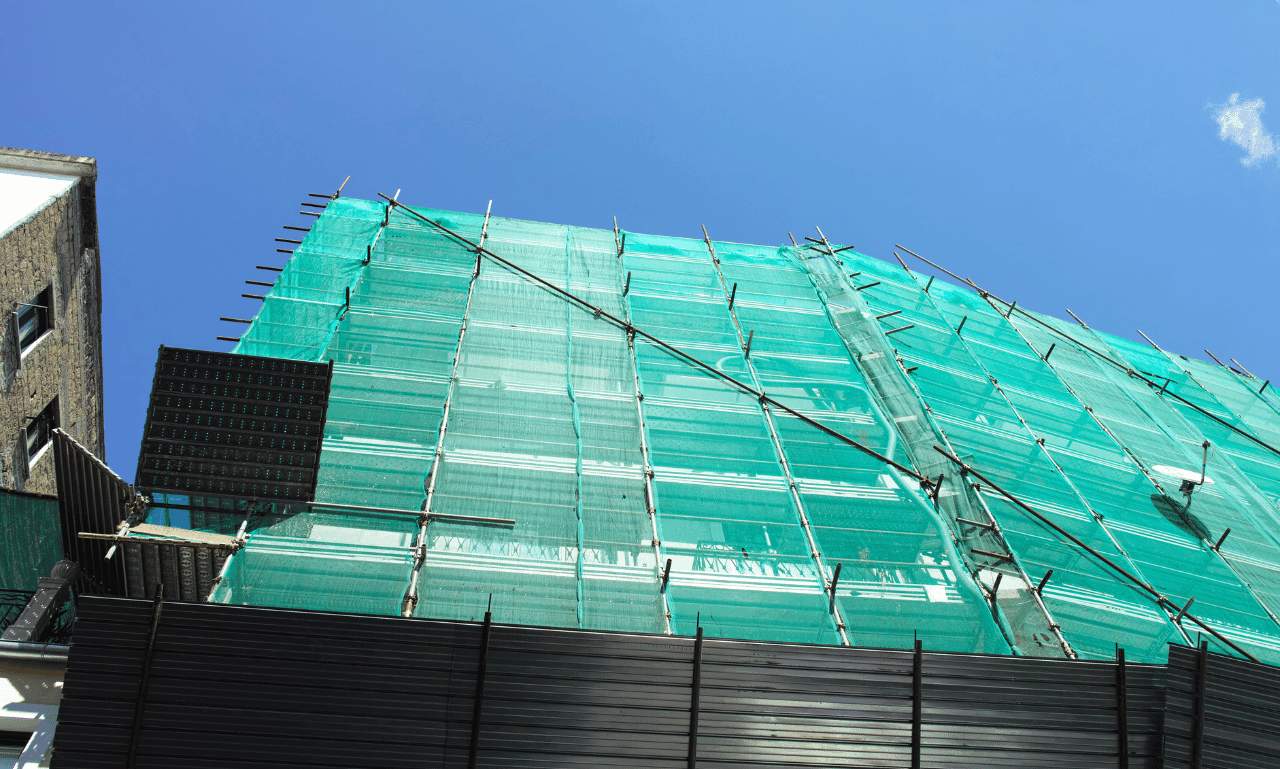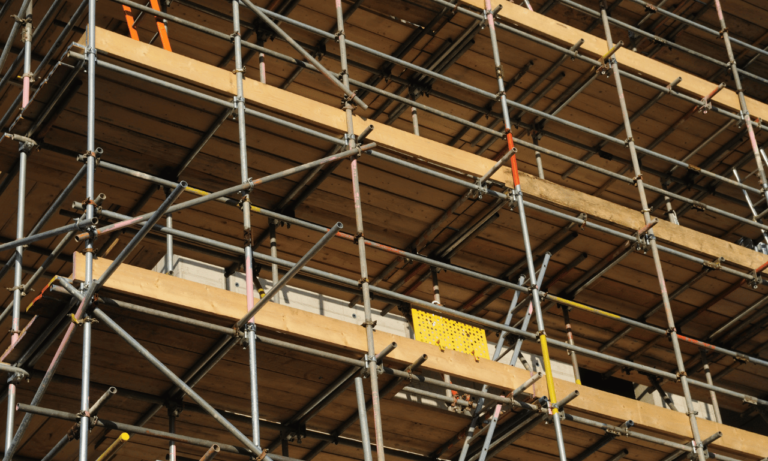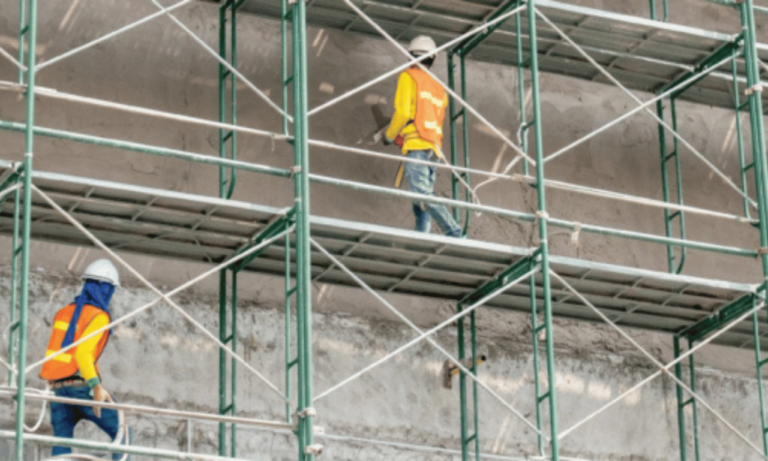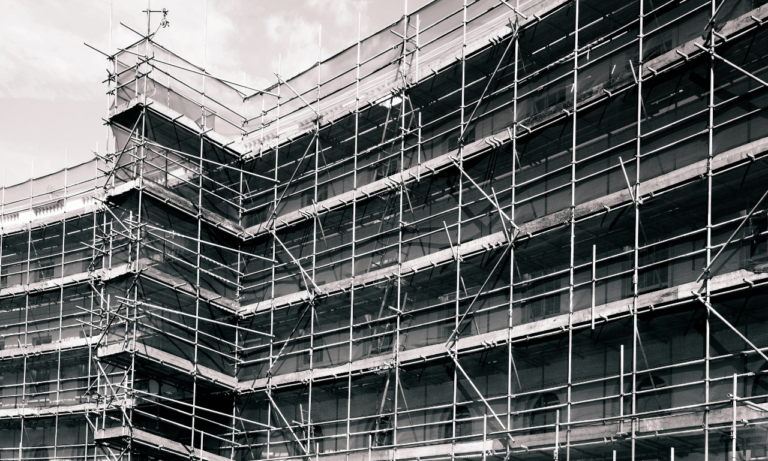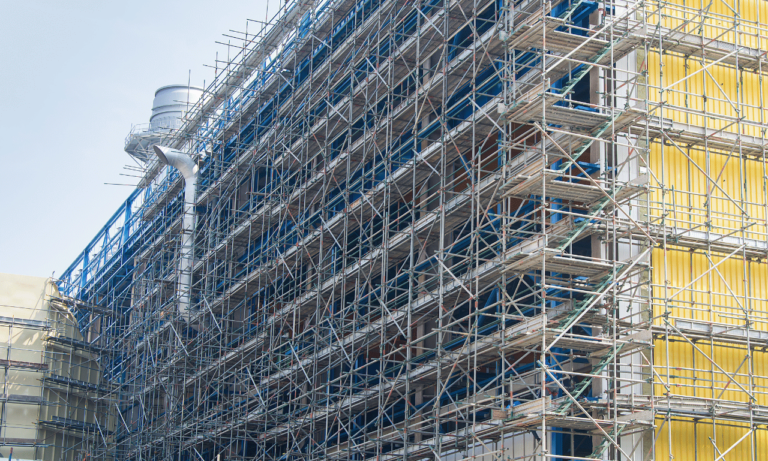Phone:
(+65)8319-0742
Constructing in the face of Mother Nature’s unpredictability demands not only skill and precision but also the right tools to weather the storm. Introducing the concept of weather protection scaffoldingâa staple in modern construction that serves as the backbone for safety and durability. This high-grade protection system is engineered for resilience, providing a stable foundation for construction activities across every season. Effortlessly enduring the rigors of the elements, this type of scaffolding stands as the hallmark of weather resistant scaffolding, empowering contractors to press forward, undaunted by climatic challenges.
Comprising robust materials and innovative designs, durable weather protection scaffolding ensures that neither scorching heat nor frigid cold hampers productivity. With all-weather scaffolding, job sites remain active through rain, wind, and snow, testament to the evolution and ingenuity underpinning high-quality weather protection scaffolding. Let’s delve into the world of scaffolding that defies the elements, ensuring that a construction project’s timeline stays as firm as its foundation.
Key Takeaways
- Weather protection scaffolding is designed to offer structure and safety amidst diverse climatic conditions.
- The use of high-quality materials is crucial for creating weather resistant scaffolding that lasts.
- Durable weather protection scaffolding maintains productivity by mitigating weather-induced delays.
- Implementing all-weather scaffolding is essential for year-round construction efficiency.
- Innovations in scaffolding technology contribute to the reliability and resilience of construction projects.
- Choosing the right weather protection scaffolding system is key to safe and successful construction outcomes.
The Importance of Scaffolding in Construction
In the ever-evolving construction industry, the integrity of work platforms is non-negotiable. Scaffolding stands as a pillar of strength, providing assured stability for myriad tasks that soar above ground level. Not only does this structural marvel afford safety, but it also enhances on-site efficiency, proving indispensable for projects where traditional ladders fall short.
Safe, Stable Work Platforms
Scaffolding ensures a safe construction scaffolding environment, allowing construction workers to perform their duties at elevated heights without the constant threat of instability. Positions once teetering on dangerous are rendered secure, thanks to the reliability provided by solid scaffolding systems. With these structures, industries can uphold their commitment to safety, particularly under the duress of challenging weather. Scaffold weather protection plays a crucial role in affording peace of mind, ensuring that the platforms remain unyielding even as the tempest of nature bears down.
The Role of Scaffolding in Efficiency and Safety
Efficiency in the construction realm is measured by the ability to progress without hindrance. Scaffolding for all weather conditions emerges as the linchpin in this quest, as it enables multiple personnel to conduct work across various sections of a project simultaneously. Immune to the caprices of the weather, these sturdy frameworks bolster productivity and ensure continuity. To achieve this optimal state, key factors such as load capacity and comprehensive user training must be addressed, reinforcing the scaffolding’s capacity to endure, regardless of the climatic onslaught.
| Feature | Benefit | Consideration for All-Weather Conditions |
|---|---|---|
| Material Durability | Long-term reliability and stability | Resistance to corrosion, rust, and weather-induced wear |
| Weatherproof Coverings | Protection for workers and materials | Non-permeable, high-resistance to wind and precipitation |
| Structural Design | Maximized productivity with multiple active work areas | Advanced anchoring systems suitable for high winds and variable loads |
| Load Capacity | Safety under heavy use | Engineered to support additional weight caused by snow accumulation |
| Worker Training | Safe, knowledgeable operation | Comprehensive strategies for maneuvering in adverse conditions |
As the climate shifts and construction continues, the role of scaffold weather protection becomes increasingly prominent. Adhering to the highest standards of safe construction scaffolding ensures that, come rain or shine, projects advance steadily toward completion, with worker safety as the paramount concern.
The Vital Components of Scaffolding for Weather Protection
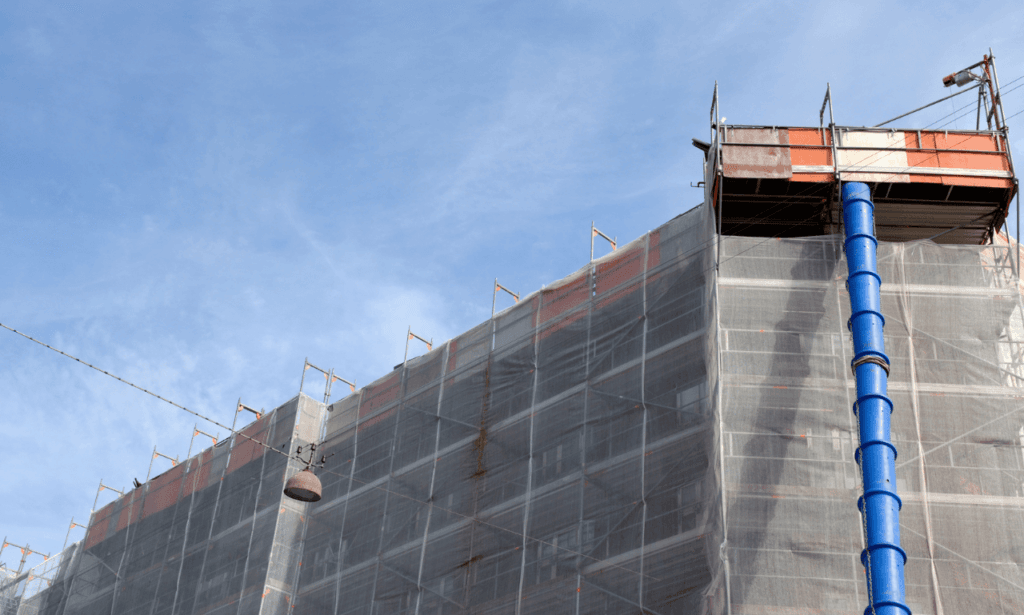
Having scaffolding with weather protection is crucial for constructions sites to withstand the diverse effects of changing climates. The integrity of weather shield scaffolding depends greatly on the quality and resilience of its parts. Among these are the robust metal materials, such as steel and aluminum, which are foundational for crafting robust weatherproof scaffolding components. These are indispensable for their high strength and stability under the weight of construction materials and the workforce.
Further securing these structures, wooden or metal planks provide dependable work platforms. Attention to detail in the weight distribution, assembly process, and the incorporation of sheltering components contribute to a cohesive system adept at handling precarious weather. Crucial to the framework are guardrails and baseplates, enhancing worker safety, especially for those operating on open and elevated areas. These components not only stabilize the scaffolding framework but also ensure overall safety and performance efficiency in inclement weather.
With the proper selection and implementation of these key scaffolding elements, construction projects can press forward despite environmental challenges. The comprehensive integration of these materials and safety features fortifies scaffolding against the unpredictability of weather, promising both productivity and safety on the construction site.
| Component | Material | Function | Weather Protection Benefit |
|---|---|---|---|
| Framework | Steel/Aluminum | Supports entire structure | Withstands high winds, corrosion-resistant |
| Planks | Wood/Metal | Secure work platform | Prevents water pooling, stable underfoot in wet conditions |
| Guardrails | Metal | Prevents falls | Provides barrier against strong winds, guards workers |
| Baseplates | Reinforced Materials | Ground-level stabilization | Secures against ground shift from heavy rains, frost heave |
| Weatherproof Covers | Various Synthetic Materials | Shields against elements | Keeps workers dry, prevents material spoilage from rain or snow |
As we can see, choosing the right components for scaffolding is a critical step in the construction process. It ensures not only that the resulting weather shield scaffolding holds up against the rigors of the job but also that it ensures safety and efficiency regardless of weather conditions.
- Steel and Aluminum: Essential for structural form and wind resistance
- Wooden and Metal Planks: Offering durable and non-slip surfaces
- Guardrails: Providing critical protection from wind gusts and elevation risks
- Baseplates: Adding essential stability on diverse ground conditions
- Weatherproof Covers: Delivering an extra layer of protection against precipitation
To maximize the effectiveness of scaffolding with weather protection, the correct assembly of these components is paramount. The objective is always to ensure that robust weatherproof scaffolding components translate to safer, more productive job sites, capable of handling the unpredictability of outdoor conditions.
Weather Protection Scaffolding: A Must for All Season Construction
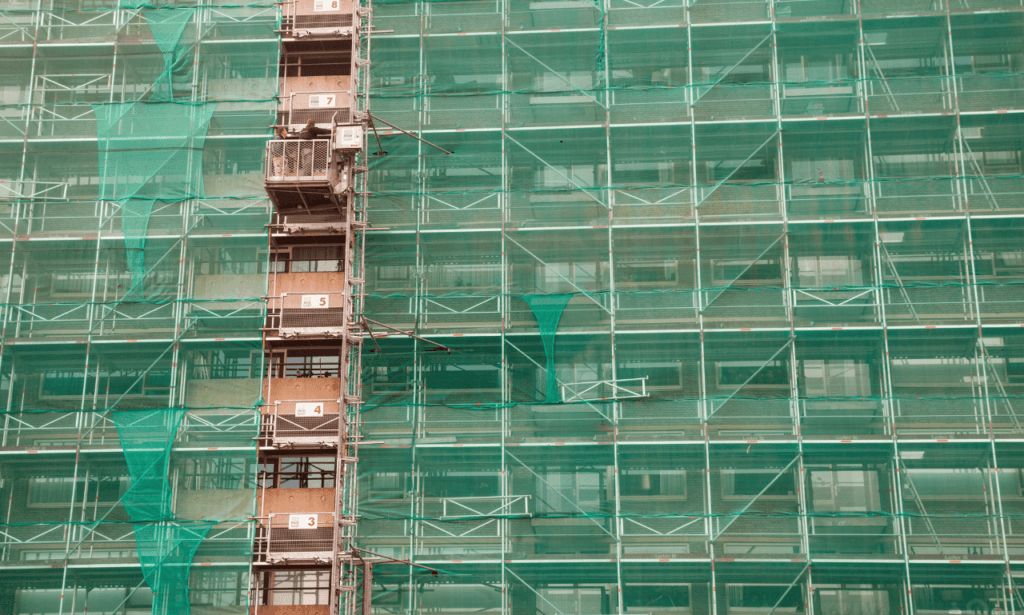
As the construction industry forges ahead through seasons of sun, rain, and wind, the unequivocal significance of durable weather protection scaffolding is brought to the forefront. This steadfast ally against the whims of nature ensures that progress on building sites remains unhampered, regardless of the elements at play.
Advantages of Weather Resistant Scaffolding
Integrated into the very framework of modern construction methodology, all-weather scaffolding solutions revel in their ability to provide a bulwark against inclement weather. Their capacity to maintain a safer workspace slashes the potential for accidents precipitated by environmental factors, thereby upholding a continuum of construction activities in hostile weather conditions. Furthermore, the inbuilt resilience within these structures bolsters operational consistency, securing workers and materials aloft in even the most daunting of weather systems.
Materials Used in Weatherproof Scaffolding
The integrity and functionality of a scaffold are underpinned by materials for weatherproof scaffolding such as aluminum, steel, and fiberglass. Renowned for their resistance to decay and damage from prolonged exposure to the elements, these materials invest in the sustainability and dependability of durable weather protection scaffolding. Beyond the robustness of the structural components, the deployment of fine-meshed netting and impermeable protective barriers further amplifies the dependable nature of these setups. These installations afford a sturdy platform capable of comfortably shouldering the dynamic needs and loads that hallmark various construction scenarios.
In essence, the marriage between diligent material selection and meticulous architectural design for weather-resistant scaffolding underscores a construction industry that is ever more capable, safe, and resilient â come rain or shine.
Various Types of Scaffolding With Weather Protection

Construction projects often face the complexities of changing weather patterns, necessitating versatile scaffolding solutions that cater to a variety of atmospheric conditions. With advancements in scaffolding technology, the industry now boasts several systems designed specifically to offer enhanced weather protection. These systems not only improve safety but also ensure continuity in workflow regardless of weather disruptions.
Understanding Frame Scaffolding Systems
Frame scaffolding stands out due to its practicality and simplicity. Known for its traditional rectangular frames and cross braces, this type of frame scaffolding can be quickly assembled and dismantled, a vital feature for construction activities that require flexibility based on weather fluctuations. Its suitability extends to diverse projects ranging from exterior building maintenance to smaller indoor renovations, offering a reliable choice for projects where rapid response to weather changes is crucial.
Benefits of System Scaffolding in Adverse Weather
For more demanding conditions, system scaffolding with weather protection is the superior choice. The modular setup of this system allows for easy and efficient assembly, even in challenging environments. Its interconnected parts provide adaptability and a high degree of structural integrity, ensuring stability against strong winds and heavy precipitation. System scaffolding often incorporates weatherproof sheeting, adding an extra layer of protection for both workers and the project beneath.
Exploring Mobile Scaffolding Solutions
Flexibility within the site can be paramount, and mobile scaffolding for various weather conditions presents an optimal solution. Outfitted with durable casters, these mobile units can be moved to where they’re needed most, responding adeptly to dynamic job site requirements. Especially designed to withstand the rigors of the weather, these scaffolds account for conditions such as wind, rain, and even snow, featuring stabilizing components that can be adjusted based on the forecast, to maintain a safe and productive working environment.
Safety Procedures for Scaffolding in All Weather Conditions
Adhering to scaffold safety procedures is paramount to ensure the wellbeing of workers and the structural integrity of scaffolding systems, particularly in the face of challenging weather. A multi-layered approach is essential, encompassing rigorous protocols and worker preparedness to uphold weatherproof scaffolding safety.
Key strategies involve meticulous inspection routines, where every scaffold is scrutinized for any condition that might compromise its safety or efficiency. This includes, but is not limited to, checks for rust, damage to connections, securement of platforms, and the removal of any debris or materials that could become hazardous during poor weather conditions. Below are critical safe scaffolding in adverse weather measures that must be implemented:
- Ensuring thorough mastery of the scaffold’s weight capacity and load distribution to prevent any structural failures during high winds or under the weight of snow and ice build-up.
- Regular reinforcement of guardrails, toe boards, and the use of personal protective equipment such as harnesses, which become even more crucial at significant heights or when weather unpredictability factors in.
- Faithful adherence to the scaffold safety manual and safety culture that emphasizes ongoing training and readiness for weather-induced challenges.
- Immediate response to severe weather warnings, including temporarily discontinuing scaffold use during high winds and diligently clearing snow or ice accumulations to maintain traction and prevent slip hazards.
It is through the diligent application of these procedures that workplaces can ensure scaffold safety even amidst the complex, ever-changing conditions posed by various weather phenomena.
Selecting the Right Weather Shield Scaffolding for Your Project
For construction projects, it’s imperative to select weather shield scaffolding that ensures safety while accommodating the specific demands of the job. Proper evaluation of scaffolding weight capacity and the need for customized weather protection scaffolding can be the difference between a project that withstands the rigors of adverse weather and one that does not.
Assessing Scaffolding Weight Capacity and Stability
Understanding the scaffolding weight capacity is crucial when selecting weather shield scaffolding. Construction materials, tools, and the workforce all contribute to the load that the scaffolding must support. Ensuring that the selected scaffold can handle the cumulative weight is essential for maintaining a safe and productive work environment. Additionally, factors such as scaffold footing, tie-offs, and bracing patterns are key to providing the stability necessary to weather environmental stresses.
Scaffolding Customization for Optimal Weather Protection
Weather can be unpredictable, and creating a customized weather protection scaffolding system tailored to a project’s unique needs can be vital. Customization options such as adjustable coverings, tarps, and temporary roofing systems offer enhanced protection from the elements, helping to keep schedules on track and workers safe. It is important to collaborate with credible suppliers who can provide insights into the latest materials and innovations that best suit your project requirements.
Finally, when evaluating different scaffolding systems, consider the ease of adaptability to changing weather. Modular or system scaffolding with components that can be quickly assembled or dismantled can provide crucial flexibility when weather conditions change unexpectedly.
By thoroughly assessing these key considerations, construction professionals can ensure they are selecting weather shield scaffolding that will offer the most efficient, secure, and tailored fit for their project, safeguarding both progress and personnel against the unpredictability of weather.
Maintaining Your Scaffolding Through Seasonal Changes
As the seasons shift, the importance of scaffolding inspection and maintenance becomes increasingly apparent. To ensure the longevity and safety of your scaffolding, a program of seasonal scaffolding care is vital. Monitoring the condition of the scaffolding and implementing routine checks can mitigate the risks associated with environmental wear and tear.
Regular Inspection and Maintenance Routines
In order to sustain a high level of safety and functionality, it is critical to establish regular inspection and maintenance routines for your scaffolding systems. This ongoing assessment allows you to detect and address any signs of deterioration or damage promptly. This is where seasonal scaffolding care comes into play, focusing on the unique challenges that each season presents, from the freezing temperatures of winter to the scorching heat of summer.
- Inspect for rust and corrosion caused by rain or snow.
- Check joint integrity and tighten any loose connections.
- Assess for warping or bending of materials due to temperature changes.
- Replace any compromised components that might affect structural integrity.
Responding to Severe Weather: Scaffolding Precautions
When severe weather strikes, taking swift and decisive action can help maintain severe weather scaffolding safety. This means not only preparing for predictable seasonal changes but also being ready to respond to more extreme weather events. Appropriate measures can range from enhancing the structure with extra ties and braces to disassembling the scaffold entirely in anticipation of a severe weather forecast.
- Adopt preventative stabilization methods before a storm arrives.
- Ensure scaffolding is clear of debris and loose materials that can become hazards.
- Implement an effective storage strategy to protect disassembled scaffolding components.
- Train personnel on emergency procedures and shut-down protocols.
By prioritizing scaffolding inspection and maintenance, and employing conscientious seasonal scaffolding care, you can enhance the resilience of your temporary structures and maintain the highest level of severe weather scaffolding safety.
Conclusion
In sum, the utility of weatherproof scaffolding is well-established in creating safer, more efficient construction scaffolding avenues regardless of climate variations. It’s clear that different project scopes and environmental conditions demand diverse scaffolding solutions, each designed to confront weather-induced challenges with resilience. By integrating all-climate scaffold safety measures and embracing diligent maintenance schedules, these structures provide continuous support and reduce hazards on construction sites. As we consider the advancements in scaffolding technology, it is evident that its efficacy is deeply rooted in a commitment to safety, adaptability, and reliability amidst all weather scenarios.
The dedication to maintaining strict safety procedures ensures that scaffolding systems not only comply with industry standards but exceed expectations for protecting personnel and materials under adverse climate conditions. A thorough understanding of a scaffold’s capabilities and limitations is central to maximizing its potential as a protective barrier against the elements. Proper selection, customization, and strategic application of these versatile systems speak to the industry’s ingenuity in developing solutions that uphold safety while minimizing weather-related work stoppages.
As the construction industry continues to evolve, the role of weatherproof scaffolding stands unwavering. It’s essential in ensuring productivity and safety, providing a bedrock for the successful execution of projects year-round. Staying informed on the latest developments in scaffold safety and incorporating this knowledge into daily practices will continue to benefit workers and the overall construction landscape, reinforcing the sentiment that weather protection scaffolding is an invaluable component for any build facing the unyielding forces of nature.
FAQ
What is weather protection scaffolding?
Weather protection scaffolding is a type of scaffolding designed to ensure stable and safe work platforms for construction workers under various weather conditions. It typically includes high-quality materials like metal pipes and wooden or metal planks, equipped with features that protect against elements such as rain, wind, and snow.
Why is scaffold weather protection important in construction?
Scaffold weather protection is crucial for maintaining a safe construction site regardless of the climate. It helps to minimize the risk of weather-related incidents, ensures continuity of work during adverse conditions, and offers a safer workspace for construction activities year-round.
What are the core components of weather-resistant scaffolding?
The key components include robust metal structures made from steel or aluminum, secure planks for platforms, guardrails, and baseplates for stability, as well as additional accessories like netting and protective barriers to enhance the scaffold’s resilience against the weather.
What materials are used in weatherproof scaffolding?
Weatherproof scaffolding typically uses materials such as aluminum, steel, and sometimes fiberglass, which are known for their durability and resistance to environmental degradation. This ensures the longevity and functionality of the scaffolding in all weather conditions.
How does frame scaffolding help in weather protection?
Frame scaffolding is easy to assemble and disassemble, making it ideal for quick setup and breakdown in variable weather conditions. When enhanced with weather protection features, it provides a secure and efficient solution for small-scale projects and climate-challenged areas.
What safety procedures should be followed for scaffolding in all weather conditions?
Safety procedures include conducting rigorous inspections, providing comprehensive worker training, ensuring familiarity with the scaffold’s weight capacity, and implementing proper stabilization techniques. It’s also crucial to use guardrails, toe boards, and personal protective equipment to prevent falls and injuries.
How do you choose the right weather shield scaffolding for a project?
To select the appropriate weather shield scaffolding, assess the project’s weight requirements, stability needs, potential environmental conditions, and access requirements. Customization features can also be considered for enhanced protection against specific weather threats.
What are some key maintenance practices for scaffolding in different seasons?
Key maintenance practices include regular inspections to detect wear or damage, maintaining a proactive maintenance schedule, implementing extra stabilization in severe weather, and appropriate storage to minimize exposure to harsh conditions to ensure safety and extend the lifespan of the scaffolding.

